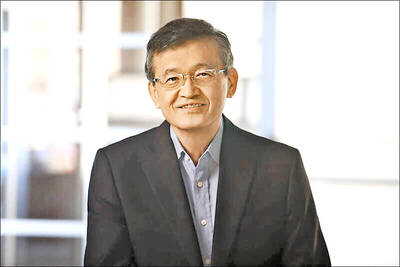In every downmarket cycle, subprime rears its head. It might not take center stage, like it did in the 2007-2008 financial crisis, but it always surfaces. When times are good, finance companies are happy to ignore the pitfalls of lending to the riskiest borrowers. When times turn bad, the problems emerge.
Carrying the mantle this time around is the “buy now, pay later” (BNPL) phenomenon. Founded in the ashes of the last downturn, the BNPL industry devised a new way to facilitate lending to consumers, swapping revolving credit for fixed installments.
At the peak, valuations discounted rapid growth. Affirm Holdings Ltd came to market via an initial public offering (IPO) with a market capitalization of US$12 billion, which peaked at almost US$50 billion — about three times Deutsche Bank AG). Afterpay Ltd was acquired by Block Inc (formerly known as Square) for US$29 billion and Klarna Bank AB raised private funding at a valuation of US$45.6 billion.
However, as interest rates rise and recession fears mount, valuations have suddenly reversed. Affirm stock is down 90 percent from its high and last week it was revealed that Klarna is in talks to raise new equity at a valuation as low as US$6 billion.
The swift derating reflects many of the issues subprime lenders have always faced. In essence, they are exposed to three cycles that typically overlap, as they have today:
The first is the credit cycle. Buy now, pay later is easy to access, but, like all forms of credit, there is adverse selection — the healthiest borrowers do not usually need it.
Some consumers use BNPL to avoid paying credit-card interest, but according to one survey, others use it to make purchases they otherwise could not afford, to borrow money without a credit check or because they cannot get approved for a credit card. Affirm leans into this. At the time of its IPO, it disclosed that it approves on average 20 percent more clients than comparable competitor products.
The result is a customer base that skews subprime. According to credit reporting agency TransUnion, about 69 percent of BNPL users are subprime or near prime. In a favorable credit environment, the distinction might not show up in earnings, but when the environment changes, defaults — and writeoffs — would rise.
Last year was an especially benign one for consumer credit. Charge-offs in the US were lower than at any time since the mid-1980s. Yet even with that tailwind, Klarna’s realized loan losses increased as it pursued faster growth, reaching 7.7 percent in the second half of last year at a time when aggregate US consumer losses were running below 1 percent.
The core competence in the lending business is not so much giving the money away, but more in getting it back — and that becomes harder in a recession.
The second cycle is the funding cycle. With the exception of Klarna, BNPL companies do not raise deposits and so depend upon capital markets to fund loans.
However, markets can be skittish, seizing up when you least want them to and most need them. Last month, Affirm priced a securitization deal — bundling loans together and selling slices to investors — at a yield of 5.65 percent, up from a 4.34 percent yield on a deal in April.
Often, conditions in funding markets track conditions in consumer credit, but sometimes they march to their own tune, confounding lenders that rely on them.
Following the Russian debt crisis in 1998, market disruption led to a steep fall in demand among investors for risky assets, including subprime securitizations, even before a recession took hold three years later. Subprime originators saw their own borrowing costs skyrocket. In the two years following the crisis, eight of the top 10 subprime lenders declared bankruptcy, ceased operations or sold out to stronger firms.
The third cycle is the equity cycle. Before BNPL became a buzzword, Klarna was chugging along just fine. It became profitable within six months of its launch back in 2005.
However, then venture capitalists showed up and seduced the company with cheap capital to fund faster growth. Since 2019, pursuing breakneck expansion, it has booked 11.8 billion Swedish kroner (US$1.12 billion) of operating losses. At the same time, its valuation rose from eight times trailing revenue in mid-2019 to 37 times trailing revenue in the middle of last year.
One of the challenges any investor faces is discerning a secular trend from the merely cyclical.
However, all lending is cyclical, and with multiple cycles to navigate, the pitfalls are impossible to avoid. With its valuation now just four times trailing revenue, Klarna — like its peers — is beginning to reflect that.
Marc Rubinstein is a former hedge fund manager. He is author of the weekly finance newsletter Net Interest.
This column does not necessarily reflect the opinion of the editorial board or Bloomberg LP and its owners.

Intel Corp chief executive officer Lip-Bu Tan (陳立武) is expected to meet with Taiwanese suppliers next month in conjunction with the opening of the Computex Taipei trade show, supply chain sources said on Monday. The visit, the first for Tan to Taiwan since assuming his new post last month, would be aimed at enhancing Intel’s ties with suppliers in Taiwan as he attempts to help turn around the struggling US chipmaker, the sources said. Tan is to hold a banquet to celebrate Intel’s 40-year presence in Taiwan before Computex opens on May 20 and invite dozens of Taiwanese suppliers to exchange views

Application-specific integrated circuit designer Faraday Technology Corp (智原) yesterday said that although revenue this quarter would decline 30 percent from last quarter, it retained its full-year forecast of revenue growth of 100 percent. The company attributed the quarterly drop to a slowdown in customers’ production of chips using Faraday’s advanced packaging technology. The company is still confident about its revenue growth this year, given its strong “design-win” — or the projects it won to help customers design their chips, Faraday president Steve Wang (王國雍) told an online earnings conference. “The design-win this year is better than we expected. We believe we will win

Chizuko Kimura has become the first female sushi chef in the world to win a Michelin star, fulfilling a promise she made to her dying husband to continue his legacy. The 54-year-old Japanese chef regained the Michelin star her late husband, Shunei Kimura, won three years ago for their Sushi Shunei restaurant in Paris. For Shunei Kimura, the star was a dream come true. However, the joy was short-lived. He died from cancer just three months later in June 2022. He was 65. The following year, the restaurant in the heart of Montmartre lost its star rating. Chizuko Kimura insisted that the new star is still down

While China’s leaders use their economic and political might to fight US President Donald Trump’s trade war “to the end,” its army of social media soldiers are embarking on a more humorous campaign online. Trump’s tariff blitz has seen Washington and Beijing impose eye-watering duties on imports from the other, fanning a standoff between the economic superpowers that has sparked global recession fears and sent markets into a tailspin. Trump says his policy is a response to years of being “ripped off” by other countries and aims to bring manufacturing to the US, forcing companies to employ US workers. However, China’s online warriors